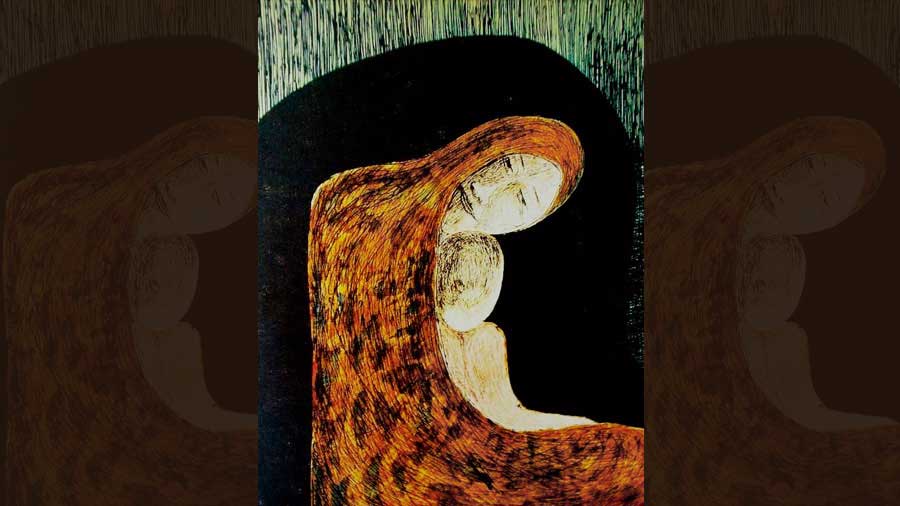During this Christmas season I want to reflect upon Jesus Christ in the eyes of Rabindranath Tagore.
Jesus and Tagore have many things in common. They were great spiritual leaders and teachers of their time and continue to be. They have had significant impact on people and the world. Tagore was also sometimes compared in the West to Jesus in his manner and appearance.
They had similar visions, similar ideas and teachings. There are volumes of publications associated with them. The two great books that have made them what they are today are the New Testament (Bible) and Gitanjali respectively. Tagore has written a considerable amount on Jesus Christ and has made numerous references in his speeches and writings to Christ and also to Christianity.
That the Birth of Jesus made a deep and lasting impression on Tagore is evident from his poem, ‘The Child’.
It is the only major poem Tagore composed in English in July 1930 after his return from the village of Oberammergau in Munich, Germany to watch the traditional passion play held every ten years.
The poem was later translated into Bengali as Sishutirtha (Pilgrimage to Childhood) in Punashca where he hails the Birth of Jesus. This impression on Tagore’s mind is further borne out by his translation of T.S. Eliot’s ‘Journey of the Magi’ (Tirtho Jatri) in search of the Divine Infant.
Tagore had acknowledged the impact of Eliot’s poem (1927), the obvious reason being, that the scene of the Nativity seems to have deeply moved him.
Tagore was profoundly influenced and deeply inspired by Ave Maria (Hail Mary) composed by Franz Schubert in 1825.
The Child is a recurrent metaphor in Tagore’s poems. The passion plays coalesced in the poet’s imagination, he conceived the Child in the harmony of creative impulse in the course of a night.
Tagore finds humanity striving to transcend the burden of frustration and failure, breaking, yet refusing to be defeated and persevering with the quest. Man contains in himself the spirit of his redemption and one day, the Newborn; the divine Child shall triumph towards glorious fulfillment.
The Child is in ten sections and the actions pause and heave like the eternal waves of the sea. The poem blends the cultural contexts of the East and the West, of impressionistic descriptions and profound prophecies: “The first flush of dawn glistens on the dew-dripping leaves of the forest.
The man who reads the sky cries: ‘Friends, we have come...’
The assembled crowd feels in their blood the primeval chant of creation:
‘Mother, open the gate!’ The gate opens.
The mother is seated on a straw bed with the babe on her lap…
They kneel down, the king and the beggar, the saint and the sinner, the wise and the fool, and cry: ‘Victory to Man, the New-Born, the Ever-Living!’
The old man from the East murmurs to himself: ‘I have seen!”
Tagore wrote another poem on Jesus Christ for Christmas in 1939. “To Christ, the Son of Man”: ‘One day those who killed him, in the name of the King, have come back as devotees, Assailant calls the soldier, ‘Kill him, Kill him’, yells, The yell mixes with prayer hymns, Says he is in great pain; This cup is full of poison, throw it away.’
It was when the Second World War had been declared on September 1, 1939 and the Indian leaders had suggested that Britain should declare independence before India could help the Allied cause. The request was naturally turned down. India was not free and Europe was at war.
Tagore wrote these lines during the period of his serious illness at the age of 78 and as death was drawing near. Probably he would have contemplated on the sufferings and death of Jesus.
The spiritual depth and the universal vision of Jesus are seen powerfully echoing in the verses of Tagore.
Tanusree Shankar’s interpretation of The Child beautifully depicts, the commemoration of the birth of Jesus ‘takes us every time to a flowing, rhythmic spiritual journey through the ages from the bondage of ignorance to the freedom of enlightenment and self- realisation. It is only the ardent hope and deep faith that take us along, to the newness of life offered by the Child, full of divinity.’
Christmas is celebrated all over the world on December 25. The Visva-Bharati University at Santiniketan organises a display of lights and fireworks at Melar Math on December 24 every year, a customs started by the Visva Kavi himself. It is known as the Christo Utsab. I wish all readers a Merry Chirstmas and blessed 2022.
Father Felix Raj is the vice-chancellor of St Xavier’s University, Calcutta
